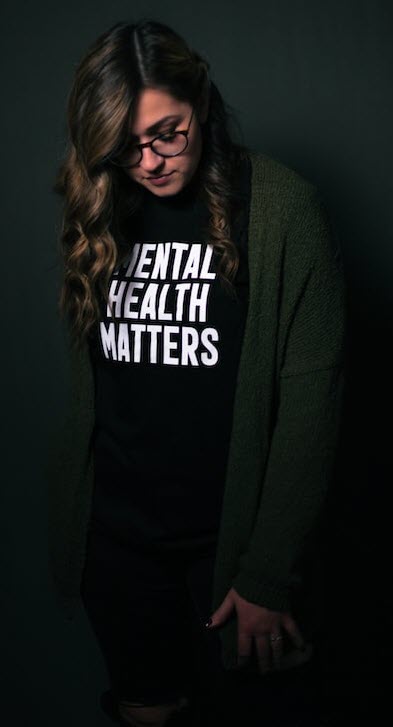Cupertino California Substance Abuse Treatment
There are a range of substance abuse treatment choices available in Cupertino. Discover the different levels of treatment provided by The Addiction Resource Guide.

Drug abuse treatment programs vary based upon an individual’s needs and the severity of their addiction. Some people may finish treatment on an outpatient basis, while others may require more intensive care, such as residential treatment. A team of addiction professionals can work with a specific to figure out which substance abuse treatment program is best for them.
Kinds Of Addiction Treatment Programs in Cupertino CA
There are several kinds of Cupertino California addiction treatment programs. Some people may go through various phases of treatment, whereas others might just require a couple of levels of care.
Medical Drug Detox
A Cupertino medical detox program is the first step for somebody who is beginning treatment for a serious addiction to compounds like heroin, alcohol or benzodiazepines. In drug or alcohol detox, clients are monitored by qualified health professionals who can keep track of signs and make sure that clients stay safe while withdrawing from drugs or alcohol.

In a medical detox treatment program, personnel can provide medications to reduce the discomfort of withdrawal as drugs and alcohol are leaving the body. For instance, specialists report that people who are withdrawing from heroin may take lofexidine to relieve withdrawal signs. People might likewise take buprenorphine or methadone throughout medical detox. It is essential to bear in mind that medication is just utilized during withdrawal when clinically cleared by a medical professional.
Medication-Assisted Treatment (MAT)
Medications can be used during the withdrawal process in medical detox, and they can likewise belong of an ongoing medication-assisted treatment program. Medication-assisted treatment involves using medications in tandem with counseling throughout the recovery process.
Medication-assisted treatment is typically used to deal with dependencies to illicit opioids, prescription opioids and alcohol. Medications can help control cravings and support both brain chemistry and physical performance. According to research study, medication-assisted treatment can help people remain in treatment, minimize opiate abuse, increase survival rates and decrease criminal activity. Just like with medical detox, methadone treatment and buprenorphine are commonly recommended in medication-assisted treatments for opioid addiction. Disulfiram and acamprosate may be utilized for the treatment of alcoholic abuse.
Related: Find Addiction Treatment Centers in la mesa california
Inpatient Treatment for Cupertino Residents
Cupertino Inpatient drug rehab is usually offered in a medical facility or a center that specializes in inpatient treatment. In this type of treatment setting, doctor monitor patients and have 24-hour access to nurses. People participating in inpatient treatment often receive medications and counseling services and take part in group therapy.

Inpatient treatment typically involves ongoing assessment of the addiction and monitoring of goals. When a patient has actually finished inpatient treatment, personnel produce a discharge strategy and the patient is transferred to another treatment setting, such as ongoing outpatient therapy.
Cupertino California Residential Rehab
Residential rehab resembles inpatient treatment but is normally longer-lasting. According to the National Institute on Drug Abuse (NIDA), residential services generally happen outside of a healthcare facility setting, indicating residential centers supply more of a home-like environment. People receiving residential care reside at the treatment facility on a full-time basis.
Remains in residential rehab can last for a couple of weeks or numerous months, with the objective of helping people establish healthy social skills and alter ineffectual habits. However, the length of treatment is detailed and can differ commonly depending upon both the program and the individual’s requirements.
PHP Programs
A partial hospitalization program uses an alternative to inpatient or residential treatment. According to The Association for Ambulatory Behavioral Health care, these programs are offered either in health centers or freestanding centers and provide intensive services. People who take part in a partial hospitalization program might get treatment throughout days, evenings, or weekends, and they return home at night. If a helpful home environment isn’t offered, customers may live in a sober living facility.
Partial hospitalization works for clients who are not a risk to themselves but still require intensive treatment. In these programs, people invest more time in treatment than those in conventional outpatient programs, but they might be able to live in your home and get treatment through the Nobu teletherapy app.
IOP Treatment
Intensive outpatient treatment includes group treatment sessions in addition to private therapy. People who are engaged in intensive outpatient treatment may also take medications and get medication management services. Depending upon the program, clients may live off-site at home or in sober living housing. Online therapy is likewise typical for this level of care.
Intensive outpatient programs are an option to hospitalization or inpatient programs. In many cases, people will begin an intensive outpatient program after transitioning out of an inpatient setting. According to research, intensive outpatient programs provide a minimum of nine hours of service per week, however some programs may be more intensive.
Outpatient Rehab
Outpatient rehab is a step down from intensive outpatient treatment. Per the American Society of Addiction Medicine, somebody in outpatient treatment gets less than nine hours of services each week.
Comparable to intensive outpatient programs, outpatient rehab usually includes private and group counseling in addition to access to medication and medical services. In outpatient programs, people schedule appointments sometimes that fit their schedules, and they can continue to work in the community and live in your home throughout treatment. Outpatient programs offer flexibility, which is an advantage of this type of treatment.
Dual Diagnosis

Dual diagnosis treatment is provided to individuals who have both an addiction and a mental health condition. For example, a person who lives with opioid addiction and bipolar affective disorder would be a prospect for dual diagnosis treatment.
With this kind of treatment, people receive integrated services that address both addiction and mental health conditions. People in dual diagnosis services get counseling, helpful services and medications. Treatment plans need to think about both the mental health condition and the addiction to be reliable. For example, if a person gets treatment for addiction, but underlying depression is not treated, the individual may relapse to drug use as a kind of self-medication.
Court-Ordered Treatment
Court-ordered treatment is given as a legal effect for drug-related offenses, and includes consequences for noncompliance. Research studies reveal that court-ordered treatment is simply as effective, if not more so than voluntary addiction treatment. may take lots of kinds and often is conducted in the same setting as voluntary treatment. The specific requirements of treatment vary with each special court sentence. In some cases, treatment may be provided as an option to incarceration or as a way to reduce the length of imprisonment or probation.
Depending on the level of offense, kinds of court-ordered treatment include educations programs, group therapy, outpatient programs, community-based programs and residential programs.
Christian Rehab
Some treatment facilities approach addiction recovery through the lens of spirituality. The most widely known neighborhood support system, Alcoholics Anonymous (AA), was established on strong spiritual principles and continues to promote faith-based recovery to its 2 million members worldwide.

If you think that spiritual concepts might benefit your recovery, you can easily find treatment programs that implement these concepts alongside standard medicine. Research reveals that recuperating patients with higher levels of spirituality display favorable qualities such as increased optimism, lower anxiety and greater strength to stress. By assisting a person in recovery find self-confidence, faith-based rehab facilities intend to fortify their path to sobriety.
Cupertino Aftercare Centers
Aftercare includes services that people participate in to preserve enduring sobriety after completing a treatment program. Aftercare services may include ongoing counseling, involvement in support groups, or linkage to case management or peer support services. Aftercare plays an essential role in avoiding relapse. According to research study, aftercare is more reliable when people participate in it for longer periods of time.
Related: Find Addiction Treatment Centers in gardena california
Short-Term vs Long-Term Addiction Treatment in Cupertino

Short-term treatment typically lasts around thirty days, however treatment of this length may not always work. NIDA reports that short-term residential programs are typically intensive, and it is needed for people to shift into an outpatient program after completing one.
Long-term treatment typically lasts someplace between 3 and 12 months. Long-lasting residential treatment happens in a home-like setting, and people have access to medical care 24 hr a day. A common model for long-term treatment is the therapeutic community, and people in this type of program typically remain in treatment for 6 to 12 months. Long-term treatment generally starts with detox from drugs, and after that an individual transitions into the program, which is initially rigorous and follows a structured schedule with rigid rules. As people make development in treatment, they are granted more flexibility.
The Typical Addiction Treatment Process in Cupertino CA
Addiction treatment is a process that normally occurs in phases. For example, the treatment process for addiction typically begins with a consumption consultation and continues from there.
The following are typical steps in an addiction treatment program:
- Consumption: The consumption process includes an addiction expert event information to admit you into a treatment program. For instance, the professional will discuss your health history and most likely perform a standard medical exam. Basic information, such as date of birth, earnings, family background and employment history will also be gathered throughout the consumption process.
- Screening & Evaluation: Throughout the screening and assessment phase of treatment, a specialist will use a tool such as the Substance Abuse Evaluating Test (DAST) to figure out the degree of a person’s issues with substance abuse. These tools involve a brief interview and efficiently provide the treatment team with information about an individual’s substance usage. Utilizing screening and assessment outcomes, the professional group can determine what further examinations are required.
- Assessment: After the screening and assessment are finished, a full substance abuse evaluation will be completed. This examination will be more extensive. During this assessment, a clinician will gather information about your history of substance abuse, including when you initially began using, what compounds you have utilized and how frequently and in what amounts you have utilized. The clinician will likewise discuss signs of your substance abuse, such as whether you experience withdrawal, what physical effects you have actually experienced as a result of substance abuse and whether you have actually experienced legal difficulties or difficulties at work or home due to drugs. A clinician may utilize an assessment tool such as the Addiction Intensity Index (ASI) to gather detailed info about your substance use and its effects.
- Establishing a Treatment Strategy: After a complete assessment is finished, a clinician will deal with you to develop a treatment plan. Addiction treatment prepares address areas of need, such as abstaining from drugs and obtaining work, as well as what services or resources will be used to attend to these areas. A treatment plan likewise mentions long-lasting goals and shorter-term objectives. Professionals report that treatment strategies need to also make use of a client’s strengths.
How to Discover a Drug or Alcohol Treatment Center Near Cupertino
If you are all set to get in treatment, the Substance Abuse and Mental Health Providers Administration uses a substance abuse treatment locator. With this simple tool, you can enter your zip code and discover alcohol and drug treatment services located near you. The Addiction Resource Guide likewise provides local rehab resources and has full-service treatment centers throughout the United States
If you or a loved one is seeking addiction treatment, The Addiction Resource Guide has treatment centers located throughout the nation and can create a substance abuse treatment plan that fulfills your unique requirements. Connect to our caring admissions department today to discuss your requirements and start the journey toward recovery.
10430 S De Anza Blvd Ste 672
Cupertino, CA 95014
(866) 932-5985
